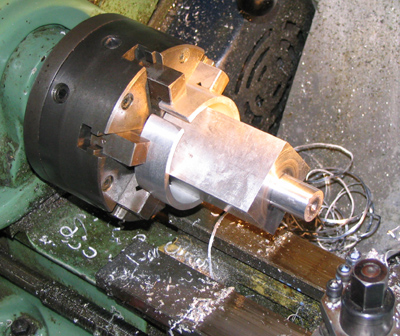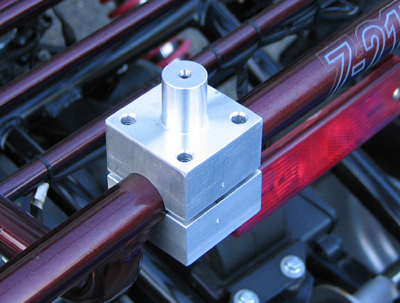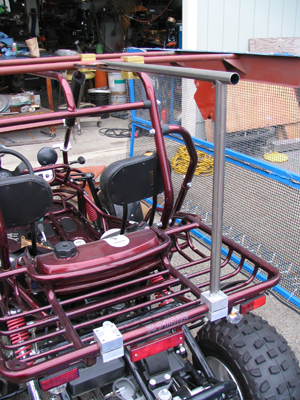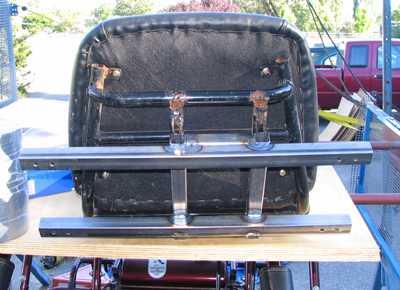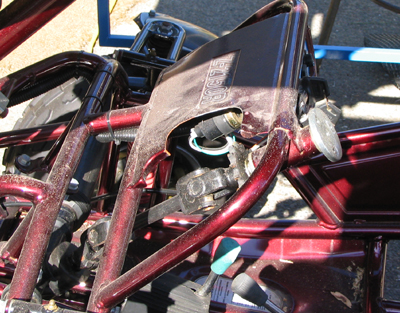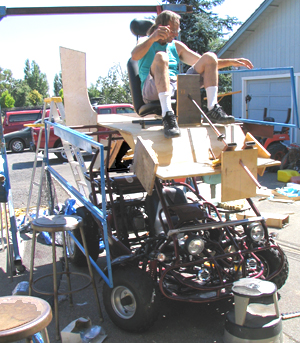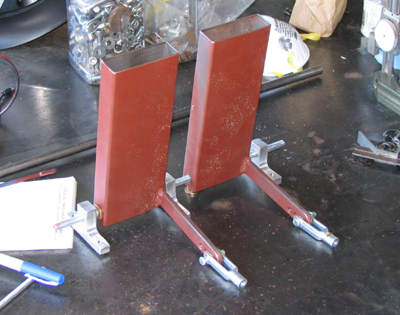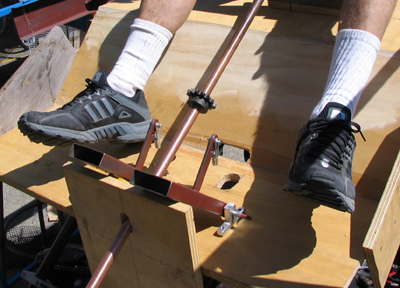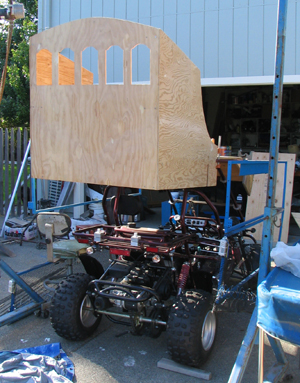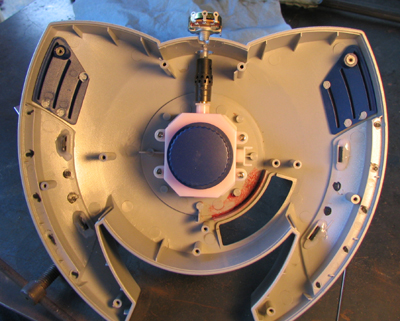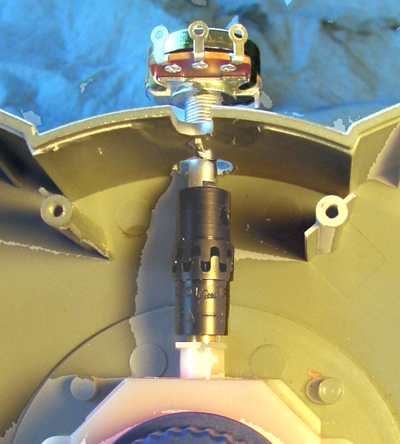Judy and I have been thru a rough patch that I don't want to talk about and it's only in the last few weeks that we've been able to stop grieving long enough to get anything accomplished.
Back around July 4 Chris N. came to visit (on a 94 degree day!) and with his help and a couple of tools I banged out for the occasion we managed to reattach the modified gas and brake pedals. The trouble wasn't the attachment of the pedals so much as it was the fastening of the tension springs that cause them to return to "neutral" after each stomp. Once this was done I felt more confident fabricating the vertical link rods that will be tensioned by an upper pair of as-of-then unfabricated pedals. Friday and Saturday July 15, 16 were also terrifically productive days, thanks to the timely arrival of my campmate and pal Don Woods, who has the combined skills of a contractor and finish carpenter. With his able assistance (over two more days with temperatures in the nineties) we reached a point where I'm regaining confidence that we may, indeed, be finished in time for Burning Man.
Whilst ruminating on where the project is heading I've decided on a new name for the car. It's now called:
Short John Silver.
Heh.
With luck Don will be paying a return visit in the next couple of weeks so we'll be able to wrap up the nasty bits. Once vehicle construction is complete I hope to lure Chris back to help me organize the wiring; he has a knack for doing it right, whereas I tend to make a mess! After that it is my profound hope that I'll have a little shake-down time before we load 'er up and fire up on the Playa!
Progress as of Friday, July 22:
Monday, July 25: A totally wasted weekend began on Friday afternoon when I took my empty argon bottle to the Santa Rosa Praxxair dealer for a refill. Ben (the smart guy) wasn't there, so Sven (the dummy for sure...) took care of the transaction. Imagine my face when I got home, hooked up the bottle and proceeded to blow holes in my nicely jigged parts! Turns out he gave me a bottle of nitrogen by mistake. Oh, well. Put the cap back on, started to lift it back into my truck and pranged my back outta joint. Couldn't straighten up for two days!! Sunday afternoon rolls around, I take out the garbage and run into a swarm of pissed off yellowjackets who made my welding arm feel like it had recieved half a dozen flu shots. SHIT!! Finally got the bottle exchanged today and when the temperatures drop a little more and if my trots subside (what did I eat?? GACK!!) I'll start again on my "night shift".
7:50PM: I take it back; Ben's an idiot too. The new tank of Argon is empty!! Guess I'll go watch Blue Collar. Sigh.
Return to the Art Car Project
Return to Steamboat Ed Haas
Please send feedback to: "Steamboat Ed" Haas
